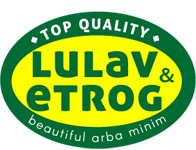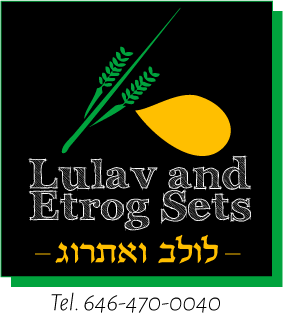
Handling & Care
To maintain freshness, it is important to place the hadassim (myrtle) and aravot (willow) in the refrigerator upon receiving your shipment until you are ready to use them. The lulav (palm branch) and etrog (citron) do not require refrigeration, and can be stored at room temperature in a cool dry area.
Because the foliage components, hadassim and aravot, are delivered vacuum sealed so that they will remain fresh as long as possible, open them right before Yom Tov (the holiday) to assemble your set. Assembling your set is quite easy to do, as the holder is made for you to simply insert these two components in their separate sleeves. However, here are a couple small tips so that you do it perfectly according to Jewish tradition.
When assembling your lulav and etrog set, it is important to remember that the spine of the lulav should be facing toward you, as you insert the hadassim and aravot, so that you have properly established the left and right of the lulav. The spine is the thick greener line that generally runs up one side of the lulav. The back of the lulav is generally indented and less green, so that is not the side you should be facing.
Once you are looking at the spine, the hadassim (myrtle) are inserted into the right sleeve of the lulav holder and the aravot (willow) into the left sleeve.
The tips of the hadassim (myrtle) on the right should be a bit higher than the tips of the aravot (myrtle) on the left.
The reasoning for this is drawn from Jewish symbolism, where the right is considered to be Chesed (kindness), and the left Gvurah (strength/restraint). As important as all attributes are, we still wish to emphasize kindness above all.
May we all merit a sweet year, full of kindness and joy. Shana Tovah.

